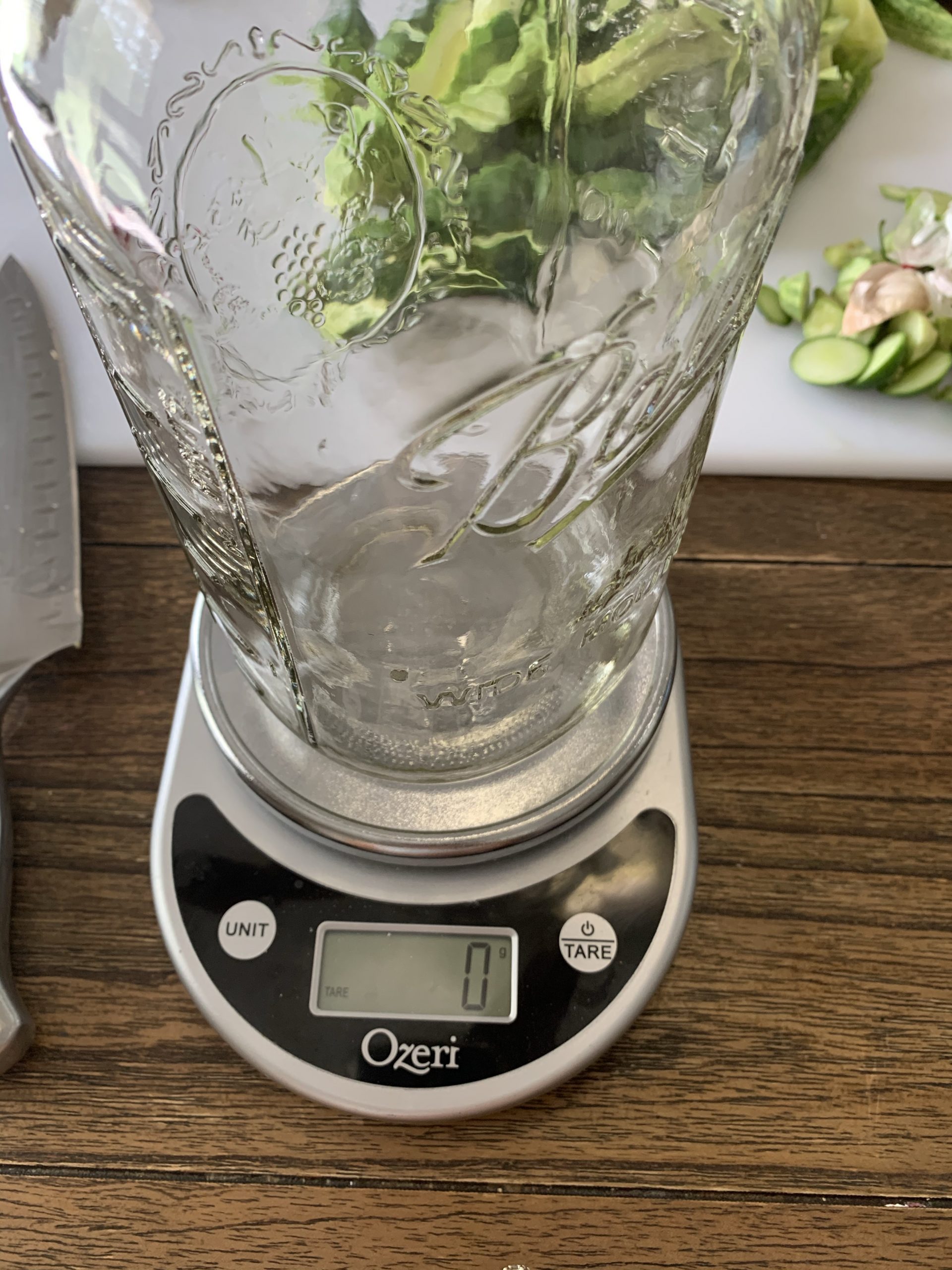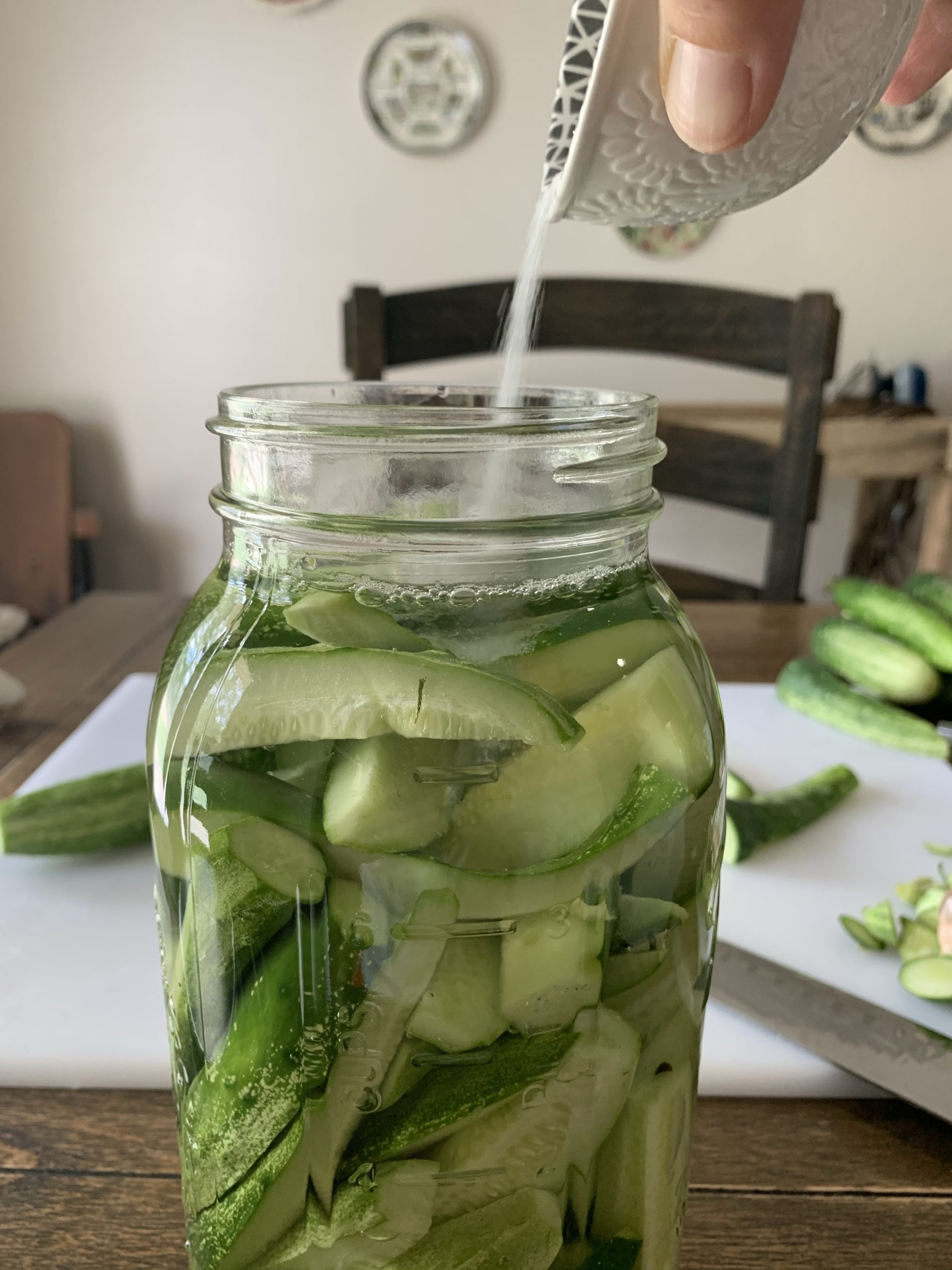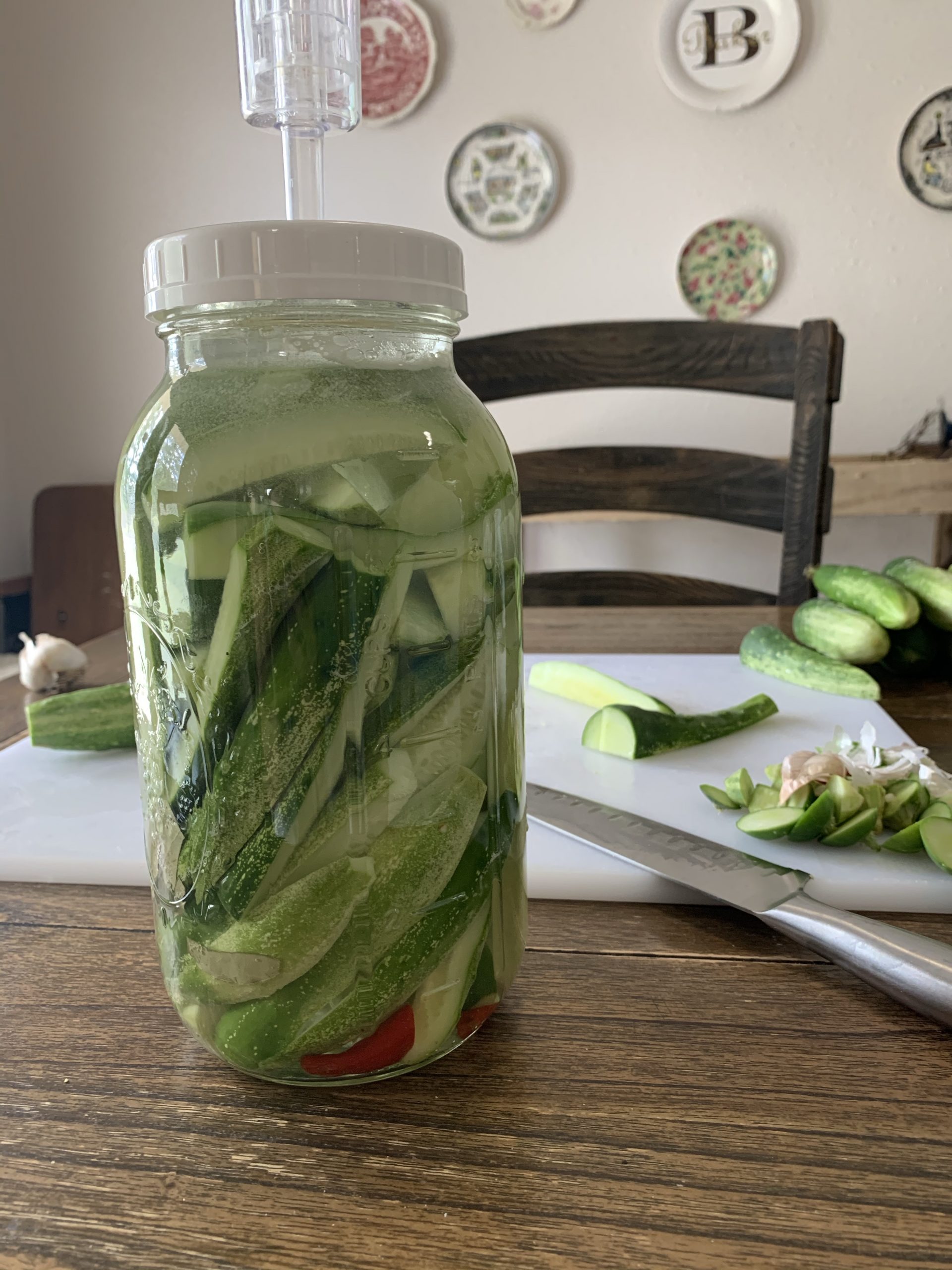That’s right, how to ferment any vegetable. In this post, I’ll be fermenting cucumbers to make fermented pickles. You can use this same method and formula to ferment garlic, make sauerkraut, ferment salsa, pickles, green beans, and even cherry tomatoes with basil and garlic (I highly recommend!) To learn this process in a video format, click HERE.
I’m sure by now, you’ve heard of the health benefits of fermented food. Fermented food is nothing new, but has made somewhat of a resurgence as of late as more and more people are becoming more health conscious.

Fermentation is the process where microorganisms like bacteria or yeast, are used to convert carbohydrates into acids or alcohol.
The process of fermenting vegetables produces beneficial bacteria. Since it is now believed that 70-80% of our immune system is in the gut, promoting beneficial bacteria is essential to promoting great health. Fermented foods aid in digestion, make nutrients more bioavailable, seem to have anticancer properties, and reduces inflammation.

So how do you ferment food? I am going to show you how to ferment most any vegetable. the method I use is a simple formula. This ensures that I have the appropriate amount of salt to preserve the weight of my item. Following a recipe not based on weight is not as safe as some foods are denser than others. I recommend using a food scale for all your ferments. You can find an inexpensive one that works well HERE.

The basic idea is to submerge your vegetables in a salt brine. The salt prohibits the growth of bad bacteria, while allowing the beneficial bacteria to flourish, preserving the food.

A three percent salt brine is safe for fermenting vegetables. To figure this, you want to weigh the contents of your jar (do not include the weight of your jar in this weight) and multiply that by 3%.

In this example, I put a half gallon jar on my food scale and “zeroed” my scale out so as not to have the weight of the jar. I filled a half gallon jar up to the neck with cucumber spears, a few bay leaves, garlic cloves, and cayenne peppers. Then, I poured in water until the vegetables were covered. The weight of all the contents came out to 1,791 grams. I multiplied this weight by 0.03 (3%). The product after multiplying tells you the amount of salt (in weight) you need to add to your jar to make the 3% salt brine.

Pour the salt into your jar. make sure the salt does not contain iodine. Sea salt or Himalayan pink salt is a good option. Shake well to distribute the salt. Add a weight to the top of the jar to keep all of the contents submerged. If anything floats above the brine, it will be at risk of molding. Check on your ferment daily to make sure none of the contents has floated to the top. My favorite weights can be found HERE.

Finally, I add a fermentation lid. I like these type with the valve because it is more hands off. If you don’t have one of these, just use a lid. You must be certain to “burp” your jar daily, or unscrew the lid to release any gas that builds up as the fermentation process progresses.
If you’d like a fermentation kit, you can find that HERE. I’ve used this kit for years! It’s held up well and I’ve never had to replace it.
From here, I let the ferment sit on my counter about 5-7 days and then taste test. If it’s to my liking, I’ll pop it in the refrigerator. It’ll keep there for months and months. My fermented garlic has kept up to a year. As long as everything smells right (it will smell slightly tangy, sour, and sometimes a fruity acidity) and looks right, it’s good for me. Watch for mold. Nothing should grow on your ferment that is dark in color. Sometimes you can get yeast, but yeast will not be fuzzy.
Well, I hope you found that informative! If you have any questions, leave us a comment.
Some of the above links are affiliate links. This means that at no cost to you, we can earn a commission through a purchase you finalize through the link provided.